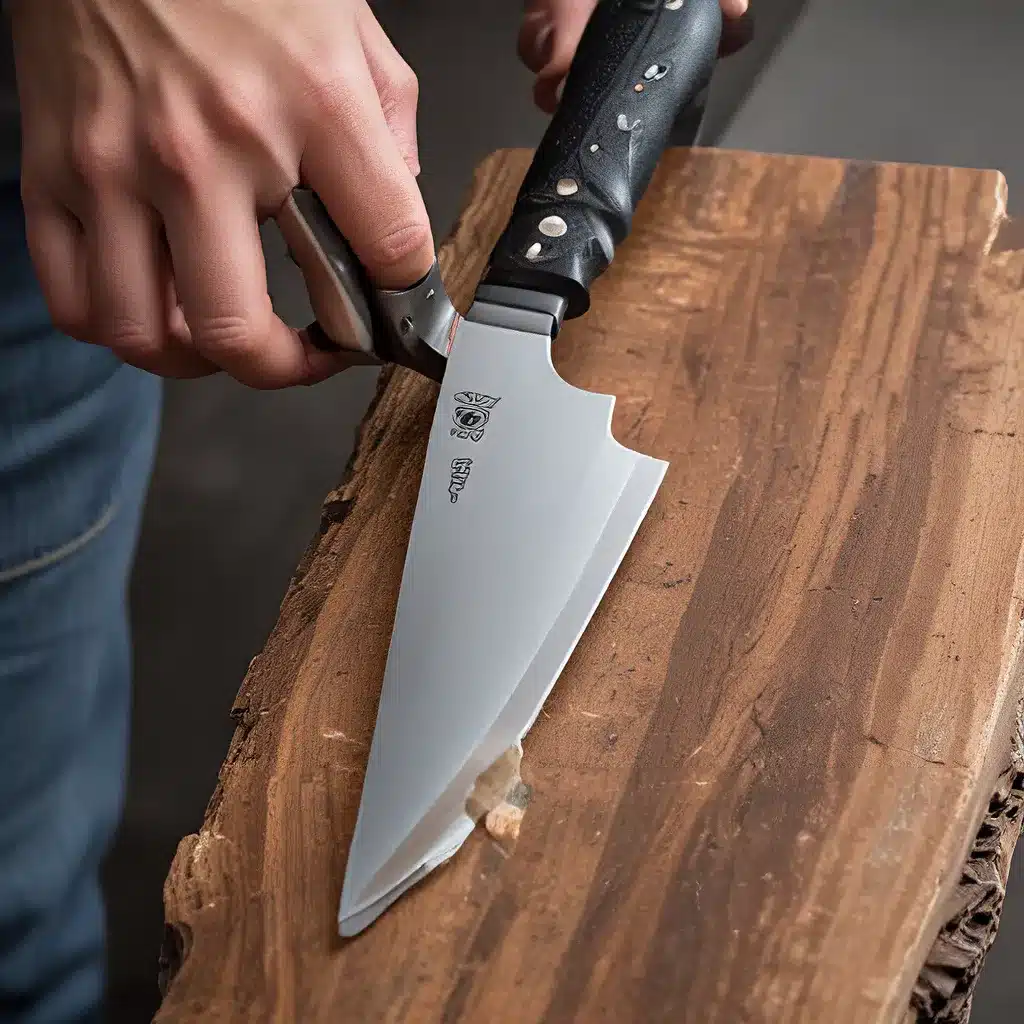
As a self-proclaimed knife nerd, I’ve spent countless hours perfecting the art of knife maintenance and sharpening. From the intricate history of blade-making to the latest innovations in sharpening tools, I’ve immersed myself in this passionate community. And let me tell you, it’s been one heck of a journey!
The Importance of a Sharp Blade
Knives are an essential tool for anyone who loves the great outdoors, whether you’re a seasoned bushcrafter, an avid hunter, or a weekend camper. But let’s face it, a dull blade can be more of a hindrance than a help. That’s why learning how to properly sharpen and maintain your knives is crucial.
As the experts at The Prepared point out, a well-cared-for knife will serve you well when you need it most. And let’s be real, knives are meant to be used and abused in emergencies, so the time to practice is now, not when the SHTF.
One of the most important things to keep in mind is that a sharp knife is safer than a dull one. Think about it – when a knife is sharp, it requires less force to use, so you’re less likely to fumble or slip, potentially causing injury. As the folks at Work Sharp Tools advise, it’s crucial to always cut away from your body and maintain a firm grip on both the knife and the material you’re cutting.
The Art of Sharpening
Now, I know what you’re thinking – “Sharpening a knife seems like a daunting task!” But fear not, my fellow knife enthusiasts, because there are simple 80-20 tips that are good enough for the average person.
According to The Prepared, the cheapest, quickest, and simplest field knife sharpening method is to use a pull-through sharpener. These handy little tools typically cost less than $10 and are easy to throw in your go-bag for those unexpected emergencies.
However, if you’re looking to take your blade’s edge to the next level, there’s a whole world of sharpening methods to explore. From sharpening stones and strops to specialized compounds, the possibilities are endless. The difference between a workable edge and a blade that lasts for years versus a great edge and a blade that lasts for decades can be as simple as an additional 20% of gear and a bit of practice.
Mastering the Sharpening Techniques
Now, I know what you’re thinking – “But I’m no expert, and the thought of sharpening my knife terrifies me!” Trust me, I’ve been there. But the truth is, you don’t need to be a knife-sharpening savant to get great results.
As the experts at The Seattle Times put it, “A good enough edge is better than perfect.” You don’t need to learn how to put a “screaming sharp edge” on your blade that would make even Hattori Hanzo jealous. A serviceable field edge is often all you need, especially for survival and outdoor purposes.
I’ve encountered countless serious bushcrafters and soldiers over the years who have never bothered to learn how to put a mirror-polished edge on their knives. Yet, they all manage to get by with a cheap diamond stone or a pull-through, a scuffed-up blade, and a serviceable field edge. After all, there’s a point of diminishing returns when creating a super-sharp edge, as the thinner the material gets at the point, the more prone it is to bending and chipping.
So, don’t be intimidated by the prospect of sharpening your knives. Start with the basics, and you’ll be on your way to keeping your blades in tip-top shape in no time. And who knows, you might even develop a newfound appreciation for the art of knife maintenance, just like I have.
Caring for Your Blades
Of course, sharpening is just one part of the equation when it comes to keeping your knives in pristine condition. Proper storage, oiling, and regular maintenance are also crucial to ensuring your blades last for years to come.
As the experts at Herman Knives can attest, a well-maintained knife is a joy to use and will serve you faithfully in even the most demanding situations. Whether you’re an avid outdoorsman or a dedicated home chef, taking the time to care for your blades can make all the difference.
One simple tip I’ve learned over the years is to always hand your knife to another person by grasping the spine of the blade and handing it over handle first. This not only demonstrates good knife safety but also helps to protect the edge of the blade from unintentional damage.
Another important aspect of knife care is oiling and storage. The Prepared recommends using a light, non-greasy oil to keep your blades in pristine condition, and storing them in a sheath or case to prevent nicks and scratches.
Embracing the Knife Enthusiast Lifestyle
As a self-proclaimed knife nerd, I can attest that there’s a whole world of knowledge and passion waiting for you to explore. From the intricate history of blade-making to the latest cutting-edge (pun intended) innovations, the knife enthusiast community is a fascinating one to be a part of.
Sure, it might seem daunting at first, but trust me, the rewards of mastering the art of knife maintenance and sharpening are well worth the effort. Whether you’re a seasoned outdoorsman or a budding home chef, taking the time to care for your blades can truly elevate your experience and unlock a whole new level of appreciation for these essential tools.
So, what are you waiting for? Grab your knives, sharpen your edge, and get ready to embark on an exciting journey of discovery. Who knows, you might just become as obsessed with this hobby as I am!


